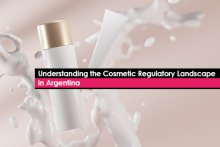Quality by design (QbD) is based on sound science and quality risk management through which quality is built into products. Although the benefits of QbD are obvious, the industry has been relatively slow in adopting the concept because QbD often falls low on the list of immediate priorities and understanding.
The pharmaceutical industry and regulators understand the need to move from end-product testing to a more enhanced quality model. The ideal model would utilize the concepts of quality by design, risk management and quality systems for identification, prioritization, design and product quality control.
The focus should now be on how to overcome the hurdles to implementing these key concepts. The establishment of Q8, 9 and 10 provides guidance on the concepts of Pharmaceutical Development, Risk Management and Quality Systems, but are not “how to” documents. Firms must determine how to best integrate these concepts into their company specific programmes and processes. There are a number of key questions and concerns that industry and regulators are working on to evolve the maturity of these concepts into more practical guidance:
- First and foremost, quantifying the benefits of a QbD approach today and at some future point where “regulatory flexibility” may be achieved.
- What amount of regulatory oversight is needed to take advantage of a QbD approach? For instance, how much information and knowledge should a firm provide in a regulatory submission to describe the design space and control strategy?
- Questions remain regarding the regulatory inspection approach to review risk assessments that firms may perform as a part of a QbD Risk Management program.
- Although the Q8, 9 and 10 concepts are not strictly required by global regulations, they are becoming expectations, and many firms have begun implementing these concepts because of their business benefits. The implementation of QbD brings with it a host of questions that a firm will ask itself to determine whether or not to implement and, if so, to what extent.
- First and foremost, quantifying the benefits of a QbD approach today and at some future point where “regulatory flexibility” may be achieved.
- What are the costs and what is the likely return on that investment (fewer rejected batches, less scrap, less rework, etc.)?
- Will there be some type of “regulatory flexibility” for those firms that adopt QbD and adequately identify their critical quality attributes, understand their process and develop a robust control strategy that ensures proper quality of the drug product?
- What will be the mechanisms for a post approval adoption of a QbD approach?
When fully considered and implemented, Quality by Design translates to better-developed critical quality attributes for drug product, drug substance and raw materials. In addition, all critical sources of process variability have been identified in a control strategy, measures have been taken and controls have been put in place to mitigate unacceptable risks. The benefits of this include the following
- Product waste is minimal
- Fewer process controls are required or the existing controls are more meaningful
- Batch cycle times are minimize
- The impact of process changes are fully understood
- Costly equipment and processing changes are limited
- Faster/more successful regulatory approval
- Project deadlines are on target
- Marketing dates and subsequent revenue streams are hit
Utilization of enhanced manufacturing approaches that allows manufacturers to vary the process based on variable inputs to produce more consistent drug product.
The QbD guidelines identify and define different elements of the QbD-based approach to pharmaceutical development. These elements have been proposed in order to inspire and guide pharmaceutical companies towards a practical implementation of QbD. Table-1 lists the main regulatory documents introducing and defining the QbD paradigms, along with the main contributions these documents provide
Table 1 Main regulatory documents introducing and defining the QbD paradig
| Document | Main Contribution |
| ICH (1999) | Defines the concept of quality and assists in the establishment of global specifications for new drug substances or drug products. |
| FDA (2004a) | Outlines the QbD concept and summarizes initiatives to encourage science-based policies and innovation in pharmaceutical development and manufacturing. Proposes risk assessment as a tool to evaluate the impact of variations in process inputs on product quality. |
| FDA (2004b) | Introduces the Process Analytical Technology (PAT ) framework. Defines process understanding, critical quality attributes and critical process parameters, and identifies PAT tools. Introduces the real time release concept. |
| FDA (2004c) | Defines the industrialization process as the set of activities related to product design, process design and technology transfer. Acknowledges that problems in these steps routinely derail or delay development programs. |
| ICH (2005) | Defines the concept of risk for pharmaceutical quality and provides principles and examples of tools for risk assessment and management. |
| ICH (2008) | Describes a model for an effective quality management system throughout the lifecycle of the product. Outlines the control strategy and continual improvement concepts. |
| ICH (2009) | Provides an overview of QbD in pharmaceutical development. Defines most of the QbDParadigms (quality target product profile, critical quality attributes, risk assessment, design space, control strategy), providing guidelines for their implementation and submission in technical documents. |
| ICH (2010) | Proposes questions and answers sessions in order to facilitate the implementation of the Q8/Q9/ Q10 guidelines. Provides several clarifications and the regulatory perspective mainly focused on QbD topics as design space, real time release testing and control strategy. |
| ICH (2011) | Provides a guide for ICH Q8/Q9/Q10/Q11 guideline implementation, with emphasis on criticality identification, control strategy, design space and process validation. Introduces the use of modeling as a tool to implement QbD at every stage of development. Categorizes models and provides an outline for their implementation, validation and verification. |
Conclusion:
We are embarking on a journey to develop enhanced quality principles for pharmaceutical manufacturing. There are differences between industry and regulatory agencies around the globe regarding the interpretation of QbD principles. Work by ICH is important to define key terms and concepts, to facilitate further dialog between industry and regulatory authorities and bring both
business and regulatory rewards to those that adopt QbD approach. While it should be somewhat easier to apply these principles to new drug products and processes, is a need to bridge the gap to include the introduction of QbD to existing systems. This is an exciting time for the pharmaceutical manufacturing industry as these principles are applied in the ongoing effort to ensure a more consistent quality product. By failing to identify and correct the root causes of problems early in the design phase of the process- and product-development cycle, organizations risk quality, yield, and supply-chain issues. QbD should be viewed as an opportunity that brings value and business benefits to the sponsors.





